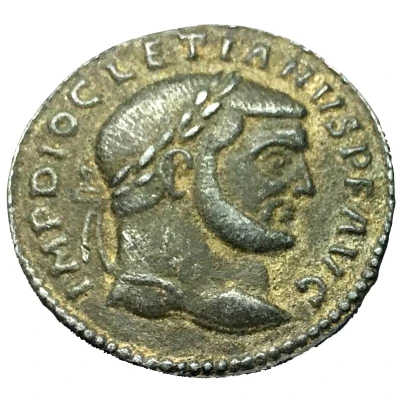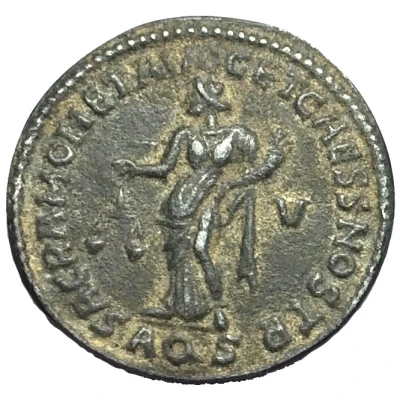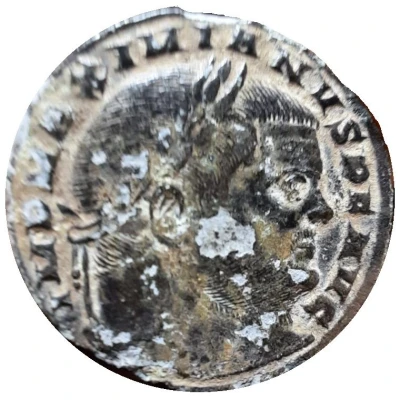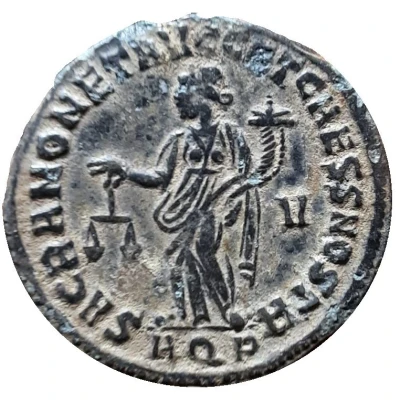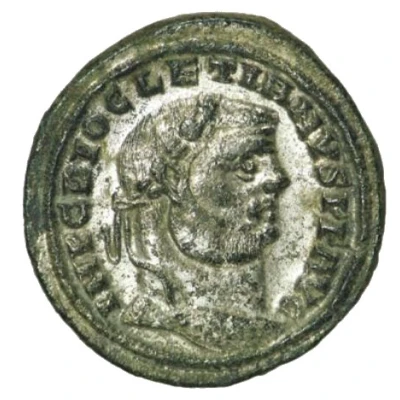
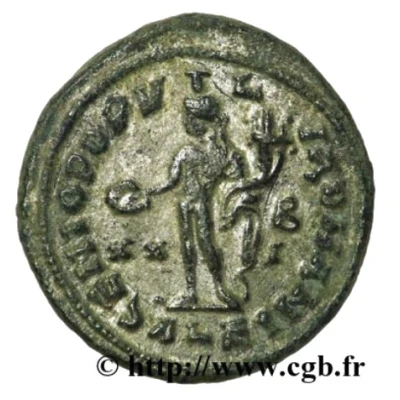

© CGB
Nummus - Diocletianus GENIO POPVLI ROMANI; Alexandria
301 year| Bronze | 9.63 g | 28.50 mm |
| Issuer | Rome › Roman Empire (27 BC - 395 AD) |
|---|---|
| Emperor | Diocletian (Gaius Aurelius Valerius Diocletianus) (284-305) |
| Type | Standard circulation coin |
| Year | 301 |
| Value | Nummus / Follis (¼) |
| Currency | Argenteus, Reform of Diocletian (AD 293/301 – 310/324) |
| Composition | Bronze |
| Weight | 9.63 g |
| Diameter | 28.50 mm |
| Shape | Round (irregular) |
| Technique | Hammered |
| Orientation | Variable alignment ↺ |
| Demonetized | Yes |
| Updated | 2024-10-05 |
| Numista | N#200258 |
|---|---|
| Rarity index | 97% |
Reverse
Genius towered, holding patera in right hand and a cornucopiae in left hand.
Script: Latin
Lettering:
GENIO POPV-L-I ROMANI
B
XX I
ALE
Edge
Rough
Comment
This follis is very interesting because of the mark in the field, XX-I. At the time of its creation in 294, the follis corresponded to 12.5 denarii. Thanks to the edicts of Maximum and Aphrodisias, we can deduce that the value of the bronze coin was doubled in 301 to 25 denarii. The mark on the reverse had been interpreted as 20 sesterces or 5 denarii. This value seemed incompatible with the estimates in the texts. We believe the reverse mark should be interpreted as 20 denarii rather than 20 sesterces. Egypt is reclaimed after the usurpation of Domitius Domitianus. Diocletian went to Egypt in 298 to reorganize the province. This follis or nummus was struck in the year the Edict of the Maximum was published. The mark on the reverse is taken from the Aurelianus of Aurelian's reform. The new bronze is cut to 1/32th of a pound (10.15 g). 1 follis was equivalent to 12.5 denarii before 301. One aureus is worth 1,500 deniers or 100 folles. One argenteus was worth 4 folles. The Empire was going through a serious economic crisis, forcing Diocletian to promulgate an Edict limiting prices (the Edict of the Maximum). In this Edict, the lowest price was set at 2 denarii (Antoninian). An italic setier of beer, or about 9 liters, was worth 4 deniers, and a pound of pork (325 g.) cost 12 deniers, or almost a follis before 301.Interesting fact
One interesting fact about the Nummus - Diocletianus (GENIO POPVLI ROMANI; Alexandria) (301) coin is that it was issued during the reign of Emperor Diocletian, who implemented a series of economic and military reforms in an attempt to stabilize the Roman Empire, which was facing significant challenges at the time. The coin's design, featuring the Genius of the Roman People on the obverse and a wreath on the reverse, reflects the cultural and political themes of the era. Additionally, the use of bronze as the material for the coin was a common practice during this period, as it was a more affordable and accessible alternative to precious metals like gold and silver.
